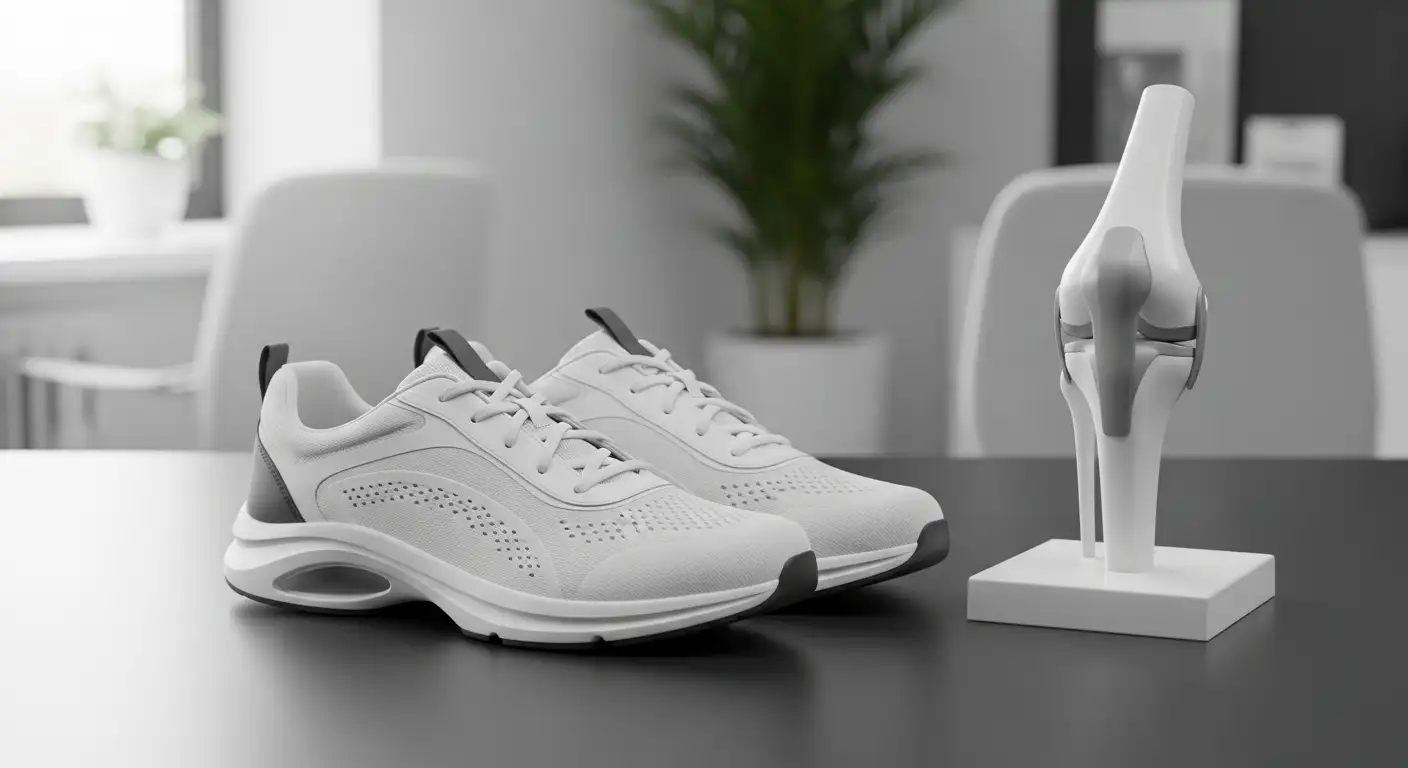
Understanding Knee Joint Pain
Importance of Knee Exams
Knee exams play a crucial role in addressing complaints related to knee pain. They help identify the cause of discomfort and determine the appropriate treatment. According to Stanford Medicine 25, an effective knee examination involves a thorough history of the knee complaint, along with a physical exam. This approach allows healthcare providers to arrive at an initial diagnosis efficiently, paving the way for the necessary treatment or additional diagnostic testing, such as MRI, if warranted.
A typical knee exam may include:
ComponentPurposeHistory of the ComplaintUnderstand specific symptoms and durationVisual InspectionIdentify signs of swelling or bruisingPalpationReduce pain through targeted examinationFunctional TestsAssess overall knee function and stability
Joint Line Tenderness (JLT) Test
The Joint Line Tenderness (JLT) test is an essential part of the knee evaluation process. This test focuses on assessing tenderness along the tibiofemoral joint line, which can indicate potential meniscal pathology. The technique for the Joint Line Tenderness test involves palpating each side of the joint line separately to evaluate sensitivity. A positive test result occurs if the patient experiences pain or tenderness during palpation of either the medial or lateral joint lines.
The JLT test is particularly valued for its sensitivity but is recognized for having low specificity when diagnosing meniscal tears. Studies indicate that JLT has the highest sensitivity compared to other meniscus tests like the McMurray test or Thessaly test, while its specificity is lower. This means that while JLT is good at detecting potential issues, it may lead to false positives.
For better accuracy in diagnosing meniscal tears, it's essential to combine physical examination findings with a thorough patient history. This integrated approach ensures that healthcare providers have a comprehensive understanding of the patient’s knee condition, leading to more effective management strategies. If you're interested in more details about knee pain and other related conditions, check our articles on related topics like tibialis anterior pain near knee or plica syndrome exercises.
Significance of Joint Line Tenderness
Understanding the significance of Joint Line Tenderness (JLT) is essential for accurately diagnosing knee issues, particularly those related to the meniscus or joint cartilage. This section covers the technique for conducting the JLT test as well as its specificity and sensitivity.
Technique for JLT Test
The JLT test is a straightforward yet effective method for assessing knee tenderness and potential meniscal injuries. The technique involves palpating each side of the tibiofemoral joint line separately to evaluate maximal joint line sensitivity. The test is considered positive if the patient experiences pain or tenderness during palpation of either the medial or lateral joint lines. This can indicate degenerative pathology of the articular joint cartilage or a compromised integrity of the meniscus [1].
StepDescription1Position the patient comfortably with the knee slightly flexed.2Use your fingers to palpate the medial joint line gently.3Assess for any tenderness or pain during palpation.4Repeat the process for the lateral joint line.
Specificity and Sensitivity of JLT
The specificity and sensitivity of the JLT test are pivotal in determining the reliability of this assessment tool. Overall, the JLT test has demonstrated high specificity and sensitivity, making it an essential part of knee examinations. Studies indicate that the JLT test shows higher sensitivity (92%) and specificity (97%) for the lateral meniscus, while the medial meniscus demonstrates lower sensitivity (86%) and specificity (67%) [1].
The following table summarizes the sensitivity and specificity of the JLT test for both meniscal locations:
Meniscus TypeSensitivity (%)Specificity (%)Lateral Meniscus9297Medial Meniscus8667
JLT has been reported as the most sensitive but least specific meniscus test when compared to other tests such as the McMurray test and Apley’s test [1]. Tenderness over the lateral joint line, in particular, may suggest conditions like a lateral meniscal tear or degenerative joint disease.
Recognizing joint line tenderness and understanding its implications can significantly aid clinicians in diagnosing and managing knee-related pathologies.
Clinical Applications of Joint Line Tenderness
Joint Line Tenderness (JLT) is a valuable clinical assessment tool that provides insight into various knee pathologies. Its significance lies in its application to specific conditions such as meniscal injuries and ACL tears.
JLT in Meniscal Pathology
JLT is particularly effective in diagnosing meniscal pathology. Tenderness over the medial joint line often indicates two common conditions: a medial meniscal tear and degenerative joint disease. This can be determined by palpating the inferior pole of the patella with the knee flexed to 90 degrees and moving medial along the joint line. Similarly, tenderness over the lateral joint line can signal a lateral meniscal tear or degenerative joint disease.
The specificity and sensitivity of the JLT test vary between the medial and lateral menisci. Studies report a sensitivity of 92% and specificity of 97% for the lateral meniscus, while the medial meniscus shows lower scores with 86% sensitivity and 67% specificity [1]. The higher sensitivity makes JLT a valuable initial assessment tool in suspected meniscal injuries, but it's noted for being the most sensitive yet least specific among other meniscus tests.
Meniscus TypeSensitivity (%)Specificity (%)Lateral Meniscus9297Medial Meniscus8667
Influence of ACL Tears on JLT
ACL tears can also influence the findings of the JLT test. While JLT is primarily used to evaluate meniscal injuries, the presence of an ACL tear can complicate the clinical picture. Patients may exhibit tenderness along the joint line due to associated injuries or changes in joint stability.
The interaction between ACL tears and meniscal tears is significant, as the instability from an ACL tear can lead to further damage to the menisci. This compounded effect emphasizes the need for thorough evaluation when JLT results are positive. Recognizing joint line tenderness in the context of ACL injuries adds another layer of information for clinicians, guiding them in creating a comprehensive treatment and rehabilitation plan.
In assessing knee conditions, it's essential to correlate JLT findings with additional clinical evaluations and imaging studies for the most accurate diagnosis and effective management of knee joint disorders. For more insight into joint-related issues, consider exploring topics such as tibial tuberosity bump or popliteus tendinitis.
Anatomy of the Knee Joint
Understanding the anatomy of the knee joint is essential for grasping how injuries or conditions impact knee pain. The knee joint is formed by the interaction of bones, ligaments, menisci, and bursae.
Bones and Ligaments
The knee joint consists of four primary bones: the femur, tibia, patella, and fibula. Each bone plays a unique role in knee function. The knee joint itself is classified as a bi-condylar synovial joint, primarily allowing flexion and extension, as well as slight medial and lateral rotation Physio-Pedia.
Key Components:
BoneDescriptionFemurThigh bone; upper part of the knee that sits on the tibia.TibiaShin bone; the primary weight-bearing bone in the lower leg.PatellaKneecap; protects the knee joint and improves leverage for the quadriceps muscle.FibulaLateral bone of the lower leg; provides stability but does not bear weight.
The knee is supported by a network of ligaments that provide stability. Important ligaments include the anterior cruciate ligament (ACL), posterior cruciate ligament (PCL), medial collateral ligament (MCL), and lateral collateral ligament (LCL). These ligaments help maintain alignment of the bones during movement and bear loads while walking or running.
Role of Menisci and Bursae
Menisci are crescent-shaped fibrocartilage structures located between the femoral and tibial condyles. They serve several essential functions, such as improving weight distribution, absorbing shock, guiding knee motion, and stabilizing the joint. The menisci help disperse axial loads radially to reduce wear on the hyaline articular cartilage Physio-Pedia.
The menisci experience reduced vascularization after the first year of life, meaning that healing potential is limited, especially in the inner regions. The outer third (red zone) retains some blood supply, allowing for slight healing when injuries occur. The menisci deepen the articular surface of the tibia and are connected to the tibia through coronary ligaments.
In addition to the menisci, the knee joint contains several bursae, such as the suprapatellar, prepatellar, infrapatellar, and semimembranosus bursae. These small fluid-filled sacs function to reduce wear and tear on the knee structures by providing cushioning and decreasing friction during movement Physio-Pedia. This cushioning is crucial in preventing pain and maintaining knee function.
By understanding the complex anatomy of the knee joint, individuals can better grasp how various factors contribute to pain and dysfunction. This insight assists in addressing specific conditions related to the knee joint line.
Knee Osteoarthritis (OA)
Characteristics and Prevalence
Knee osteoarthritis (OA) is the most common type of arthritis that affects the knee joint. It can be classified into two main categories: primary and secondary. Primary OA occurs due to articular degeneration without any obvious underlying cause, while secondary OA can result from abnormal forces across the knee joint, post-traumatic causes, or conditions like rheumatoid arthritis [3].
Knee OA is expected to become increasingly prevalent due to factors such as rising life expectancy and obesity rates. Prevalence statistics indicate that approximately 13% of women and 10% of men aged 60 and older have symptomatic knee OA, with rates climbing up to 40% in individuals over 70 years of age. The incidence of symptomatic knee OA is about 240 cases per 100,000 people annually.
Demographic GroupPercentage with Symptomatic Knee OAWomen aged 60+13%Men aged 60+10%Individuals aged 70+Up to 40%
Management and Treatment Options
Managing knee osteoarthritis typically involves both non-surgical and surgical treatment options. Non-surgical interventions often include:
Surgical methods come into play when conservative treatments fail to provide relief. Options include high tibial osteotomy (HTO), unicompartmental knee arthroplasty (UKA), and total knee arthroplasty (TKA).
The approach to treating knee OA is usually tailored to the individual, taking into consideration the severity of symptoms, age, activity level, and overall health condition. Understanding the key factors and management strategies helps in making informed decisions about treatment options.
Biomechanics of Knee Disorders
Understanding the biomechanics of knee disorders is crucial for recognizing how these issues affect knee function. Biomechanical assessments can help in diagnosing and formulating treatment plans for various conditions.
Effects on Knee Function
Knee disorders can lead to significant changes in the functionality of the joint. For example, patients with knee osteoarthritis (KOA) frequently exhibit altered knee kinematics, which include lower knee flexion angles and increased knee adduction moments while performing weight-bearing tasks such as walking and stair climbing. These biomechanical changes can contribute to the progression of KOA and lead to functional limitations [4].
In cases of ACL (anterior cruciate ligament) injuries, individuals may experience a decrease in knee range of motion (ROM) and changes in knee flexion and adduction angles. This can significantly impact their capacity to engage in daily activities like walking. The correction of these biomechanics is often addressed through ACL reconstruction to restore proper knee function [4].
Meniscus injuries can likewise alter knee biomechanics. These alterations include increased patella-femur contact force and higher knee adduction moments during activities like walking. This highlights the importance of addressing these injuries promptly to prevent further complications [4].
Knee DisorderBiomechanical ChangesImpact on FunctionalityKnee OsteoarthritisLower flexion angles, increased adduction momentsFunctional limitations in walking and stair climbingACL InjuryDecreased ROM, altered flexion/adduction anglesDifficulty in mobility and balanceMeniscus InjuryIncreased contact force, higher adduction momentsRisk of secondary complications
Importance in Diagnosis and Treatment
Analyzing the biomechanics of the knee is vital for accurate diagnosis and effective treatment. Detailed assessments that include kinematics, kinetics, and muscle performance contribute significantly to understanding various knee disorders. This knowledge enables healthcare professionals to create comprehensive treatment plans tailored to the specific mechanical changes occurring in a patient’s knee joint.
Understanding these biomechanical alterations is key for rehabilitation strategies, ensuring that individuals can return to their normal activities without pain or further injury. By addressing the root biomechanics of each condition, clinicians can improve patient outcomes and facilitate quicker recovery.
For overall management strategies regarding knee pain, including exercises and supports, refer to our related articles such as sartorius exercises and knee brace with side stabilizers.
References
[2]:
[3]:
[4]:





